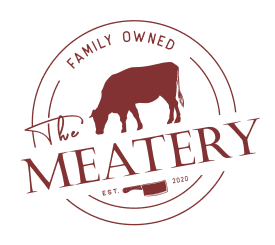What are the three best Wagyu beef?
When discussing the finest Wagyu beef available globally, three distinct varieties stand out for their exceptional quality and characteristics:
- Japanese Wagyu (A5 Grade) - Considered the pinnacle of Wagyu beef, particularly from the Miyazaki and Kobe regions. This beef is renowned for its intense marbling, tender texture, and complex flavor profile. The meat literally melts in your mouth due to its low melting point fat content.
- Australian Wagyu - Typically featuring crosses between Japanese Black Wagyu and Angus cattle, Australian Wagyu offers excellent marbling and a robust beef flavor. The meat grades typically range from MB4 to MB9+, providing a wonderful balance between traditional beef taste and Wagyu's signature tenderness.
- American Wagyu - A cross between Japanese Wagyu and high-quality American cattle breeds, this variety offers a unique fusion of intense marbling and the robust flavor profile American beef is known for.
Each of these Wagyu varieties offers distinct characteristics that appeal to different palates and cooking preferences. Japanese Wagyu excels in its buttery texture and delicate flavor, while Australian Wagyu provides excellent marbling with a more pronounced beef flavor. American Wagyu bridges the gap between traditional steakhouse cuts and the luxury of Japanese Wagyu.
The choice between these three depends largely on personal preference, intended preparation method, and budget considerations. For the ultimate luxury experience, Japanese A5 Wagyu remains unmatched. For everyday luxury with excellent quality, Australian Wagyu offers outstanding value. American Wagyu provides a familiar yet elevated dining experience that many steak enthusiasts prefer. For this Blog, we'll be focusing on Australian and Japanese Wagyu, as these are the highest quality!
Differences In Wagyu Grading Systems (Australian Vs Japanese)
The grading systems for Australian and Japanese Wagyu reflect distinct approaches to quality assessment, each with its own metrics and standards:
Japanese Grading System
The Japanese system uses a combination of letters and numbers:
- Yield Grade: A, B, or C (A being the highest)
- Quality Grade: 1-5 (5 being the highest)
- BMS (Beef Marbling Score): 1-12
The coveted A5 grade represents the highest possible quality, combining an A yield grade with a quality score of 5. This system evaluates marbling, meat color, fat color, and overall quality.
Australian Grading System
Australia uses the AUS-MEAT and MSA (Meat Standards Australia) grading systems, with marbling scores ranging from 0-9+:
- Marble Score (MS): 0-9+ (higher numbers indicate more marbling)
- MSA grading factors include: color, firmness, texture, and marbling
While both systems are comprehensive, the Japanese system is generally considered more stringent, with A5 representing a level of marbling that exceeds even the highest Australian grades.
Price And Availability Comparison
The price and availability of Australian and Japanese Wagyu vary significantly, influenced by several factors:
Japanese Wagyu
- Price Range: $200-400+ per pound
- Limited availability outside Japan
- Strict export regulations
- Higher shipping and handling costs
Australian Wagyu
- Price Range: $50-150 per pound
- Wider global availability
- More consistent supply chain
- Lower transportation costs to many markets
Australian Wagyu's greater availability and lower price point make it more accessible for regular consumption, while Japanese Wagyu often remains a special occasion luxury. The price difference reflects not only quality distinctions but also production scale, export regulations, and transportation costs.
Differences In Cattle Genetics And Breeding
The genetic composition and breeding practices of Australian and Japanese Wagyu cattle show significant variations:
Japanese Wagyu Genetics
Japanese Wagyu represents pure bloodlines, primarily from four native breeds:
- Japanese Black (Kuroge)
- Japanese Brown (Akage)
- Japanese Shorthorn
- Japanese Polled
These cattle maintain strict genetic purity through regulated breeding programs, with the Japanese Black comprising about 90% of all Japanese Wagyu.
Australian Wagyu Genetics
Australian Wagyu typically features:
- Crossbreeding with local cattle breeds
- Various percentage levels of Wagyu genetics
- Integration of Angus and other beef breeds
This genetic diversity creates unique flavor profiles while maintaining many desirable Wagyu characteristics.
Is Australian Wagyu purebred?
Australian Wagyu exists in various genetic compositions, and not all are purebred:
- Fullblood Wagyu (100%) - Direct genetic descendants of Japanese Wagyu with no other breed influence
- Purebred Wagyu (93.75%+) - Result of at least four generations of crossbreeding back to Wagyu
- Crossbred Wagyu (F1-F4) - Various percentages of Wagyu genetics mixed with other breeds
The Australian Wagyu industry maintains strict documentation of genetic lineage through the Australian Wagyu Association. While purebred and fullblood Wagyu exist in Australia, many commercial products are crossbred, typically with Angus cattle, to create a unique product that balances Wagyu characteristics with traditional beef attributes.
What's the highest quality of Wagyu?
The highest quality Wagyu is unanimously considered to be Japanese A5 grade, specifically from certain renowned regions:
- Kobe Beef - From Tajima-gyu bloodline cattle in Hyogo Prefecture
- Miyazaki Wagyu - Known for winning multiple "Wagyu Olympics"
- Matsusaka Beef - From virgin female cattle aged 32-40 months
These premium varieties must meet strict criteria:
- BMS (Beef Marbling Score) of 8-12
- Yield grade of A
- Quality score of 5
- Specific regional certification
This highest grade represents the pinnacle of Wagyu quality, characterized by exceptional marbling, flavor complexity, and tenderness that sets the global standard for premium beef. Check out TheMeatery's entire menu to try some of the worlds best beef at home!









